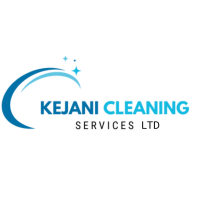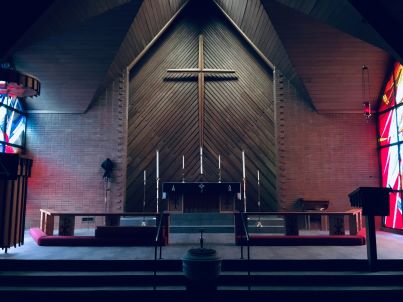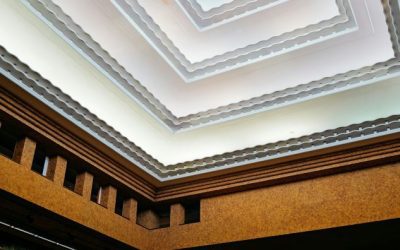When construction or renovation projects in churches are completed, the work is far from over. Dust, debris, paint splatters, and construction residue are often left behind, masking the beauty of the newly renovated or built sacred space. That’s where professional post-construction cleaning services come in—especially tailored for churches.
In this guide, we’ll explore why churches need specialized post-construction cleaning, the unique challenges involved, and the most effective solutions for ensuring a clean, safe, and worship-ready environment.
Why Post-Construction Cleaning in Churches Is Unique
Churches are more than just buildings—they are sacred spaces that host spiritual events, community gatherings, and ceremonial functions. Post-construction cleaning for such places requires:
-
Respect for sacred elements like altars, pews, icons, and prayer areas
-
Delicate handling of historic or antique architecture and furniture
-
Attention to detail to prepare the space for worshippers, some of whom may be sensitive to dust or chemical residues
Moreover, many churches are multi-functional, with sanctuaries, classrooms, kitchens, and halls—each requiring different cleaning protocols.
Common Post-Construction Cleaning Tasks in Churches
1. Dust and Debris Removal
Construction dust settles on everything—from stained-glass windows to altar rails. Thorough dusting and vacuuming are essential, especially in:
-
Ventilation systems
-
Upholstered pews and carpets
-
High ledges and beams
-
Organ lofts and balconies
Using HEPA-filter vacuums helps capture fine dust without circulating it in the air.
2. Sanitization of Worship and Gathering Areas
High-touch surfaces such as pews, handrails, lecterns, and microphones must be sanitized using non-toxic, fragrance-free disinfectants that are safe for both surfaces and people.
3. Window and Glass Cleaning
Churches often have decorative or stained-glass windows. Cleaning these requires:
-
Non-abrasive cloths
-
pH-neutral glass cleaners
-
Special attention to leaded joints or historic elements
4. Floor Restoration
Post-construction work may leave cement dust, paint, or adhesive residue on:
-
Tiled floors
-
Wooden parquet
-
Polished concrete
-
Carpeted aisles
Cleaning professionals may use:
-
Floor scrubbers or buffers
-
Eco-friendly floor cleaners
-
Hand-cleaning methods for fragile finishes
5. Paint and Adhesive Removal
It’s not uncommon to find accidental paint drips or glue stains on surfaces. These require careful removal using:
-
Solvents safe for wood, metal, or concrete
-
Plastic scrapers to avoid scratching
-
Spot treatments followed by full-surface cleaning
Eco-Friendly and Safe Cleaning Products for Churches
Given that churches host children, the elderly, and allergy-sensitive individuals, using eco-friendly products is a must. Recommended options include:
✅ Natural Cleaning Agents:
-
Vinegar – For windows, tiles, and general wiping
-
Baking soda – For deodorizing and gentle scrubbing
-
Castile soap – A biodegradable, plant-based soap for floors and surfaces
✅ Kenyan-Made Eco-Cleaners from Grounded:
Grounded makes safe, non-toxic cleaning products ideal for church environments. Available locally, they include:
-
Multipurpose cleaners with essential oils
-
Floor cleaners that are gentle on old tiles and wood
-
Disinfecting sprays safe for shared seating areas and equipment
Special Considerations for Church Post-Construction Cleaning
🔸 Historic Preservation
If the church is decades or centuries old, cleaning teams must:
-
Avoid moisture on delicate wooden structures
-
Refrain from using harsh chemicals on aged murals, paintings, or icons
-
Coordinate with church officials on handling antiques or religious artifacts
🔸 Scheduling and Noise Control
Post-construction cleaning should ideally be:
-
Scheduled outside of worship times or community events
-
Done in phases if the building remains partially in use
-
Kept as quiet as possible—using low-noise machines when available
Safety Protocols
As with any construction site, churches post-renovation present hazards such as:
-
Loose nails, screws, or tools
-
Slippery surfaces
-
Elevated areas (e.g., bell towers, choir lofts)
Professional cleaning teams must:
-
Use personal protective equipment (PPE)
-
Comply with Kenyan OSHA regulations
-
Have insurance and proper safety briefings before starting
Why Hire Professionals for Church Post-Construction Cleaning?
Attempting to clean a church post-construction with volunteers may seem cost-effective but comes with risks:
-
Improper handling of sacred objects
-
Damage to new or old installations
-
Inadequate removal of hazardous dust or debris
Hiring a company like Kejani Cleaning Services ensures:
-
Trained and respectful staff
-
Eco-friendly, safe products
-
Compliance with local regulations
-
Fast and thorough turnaround to get the building ready for worship
Our Church Post-Construction Cleaning Packages Include:
✅ Interior and exterior debris cleanup
✅ Dusting of all high and low surfaces
✅ Cleaning and polishing of pews, altars, and fixtures
✅ Stained glass and window cleaning
✅ Floor scrubbing, waxing, or steaming
✅ Bathroom and kitchen cleaning
✅ Sanitization of all high-touch areas
✅ Safe disposal of construction waste
Final Thoughts
Post-construction cleaning for churches is more than just a janitorial task—it’s about restoring dignity and cleanliness to a space meant for worship and reflection. With a combination of skilled manpower, appropriate tools, eco-friendly products, and deep respect for religious environments, a church can be transformed from a dusty construction site into a shining sanctuary.
📞 Need Church Post-Construction Cleaning Services?
Let Kejani Cleaning Services handle your post-construction cleaning with professionalism, care, and eco-consciousness.
🌐 Visit kejanicleaning.co.ke
📧 info@kejanicleaning.co.ke
📞 +254 115 887 085





0 Comments